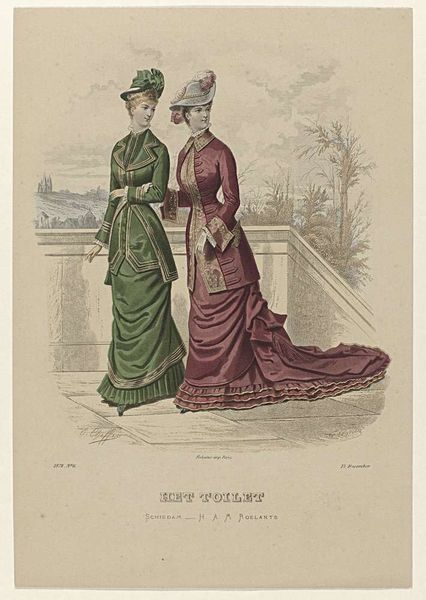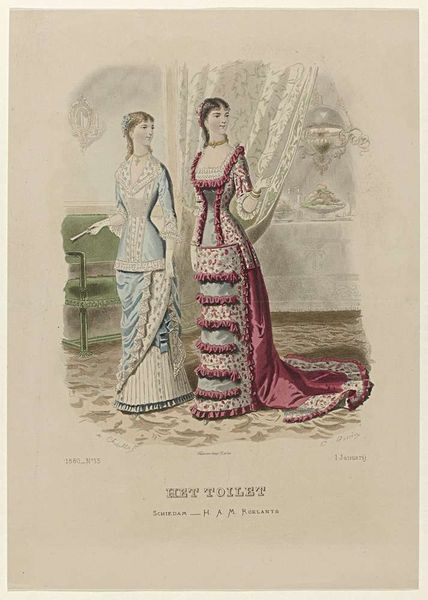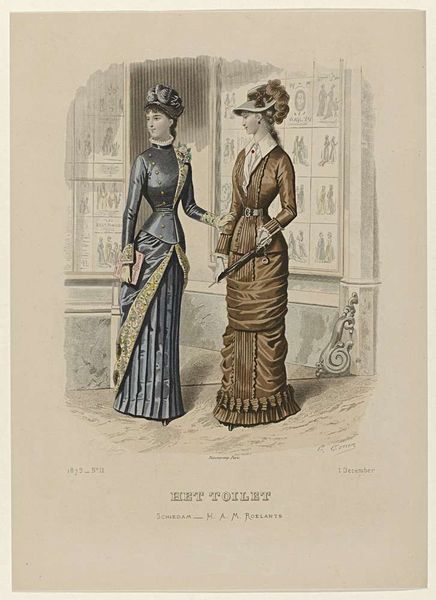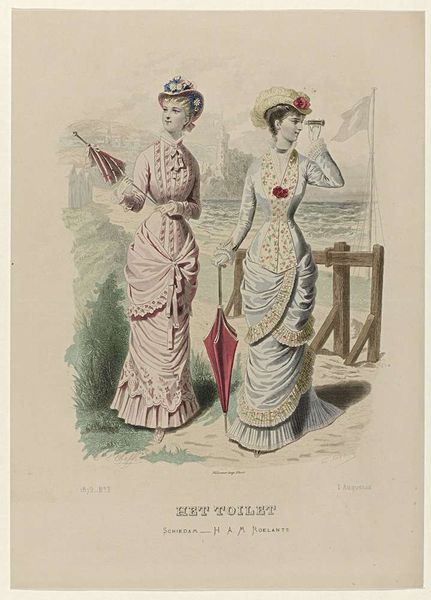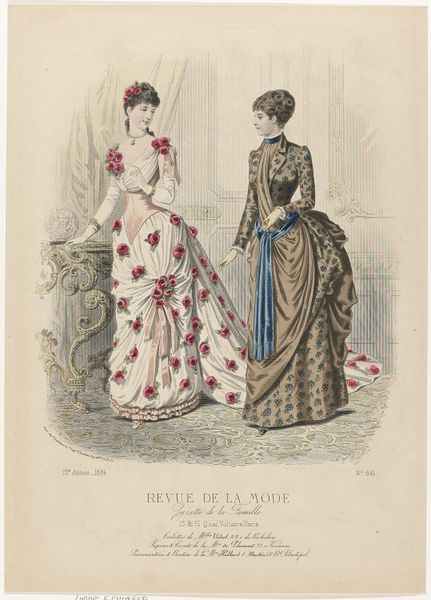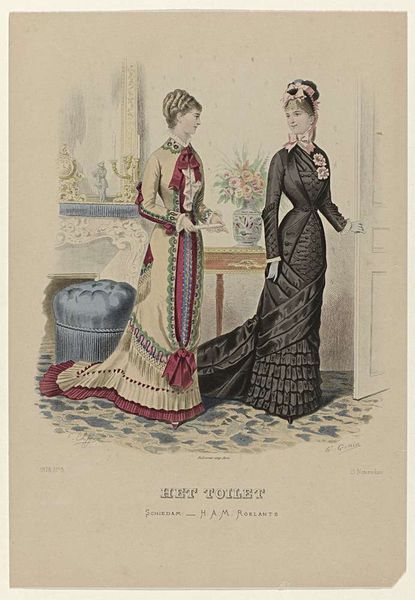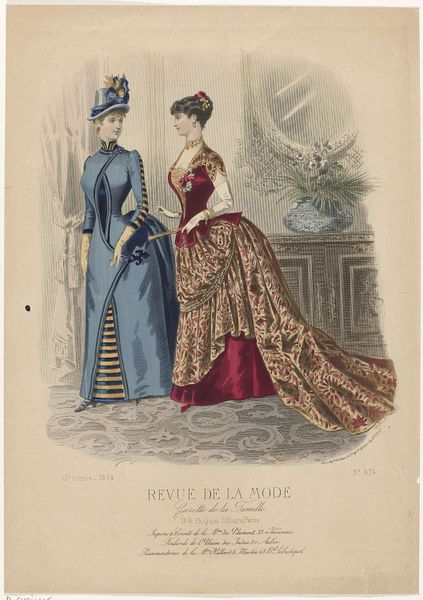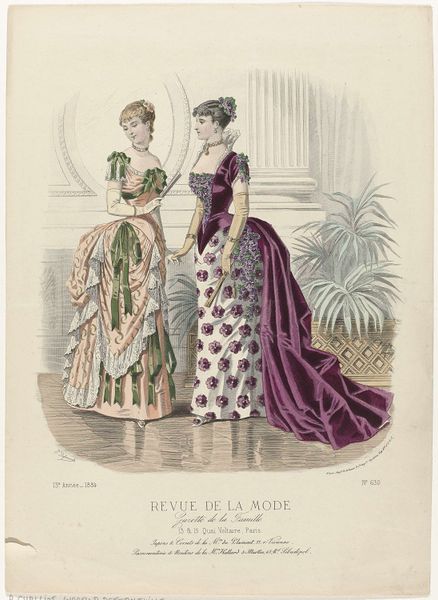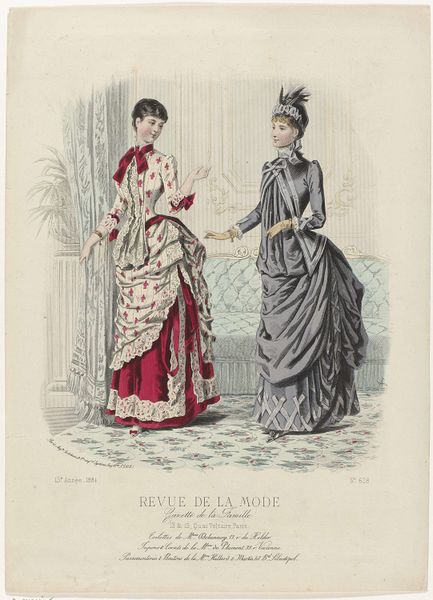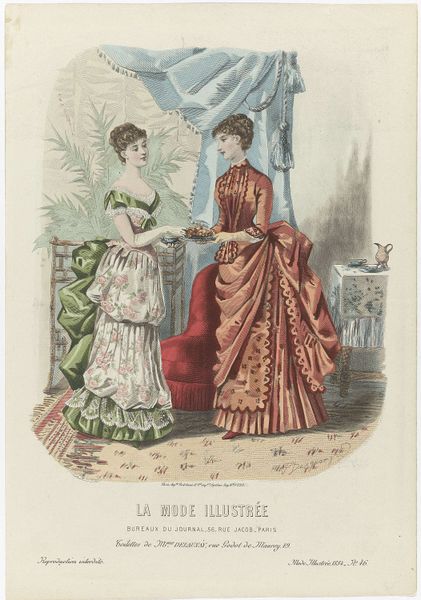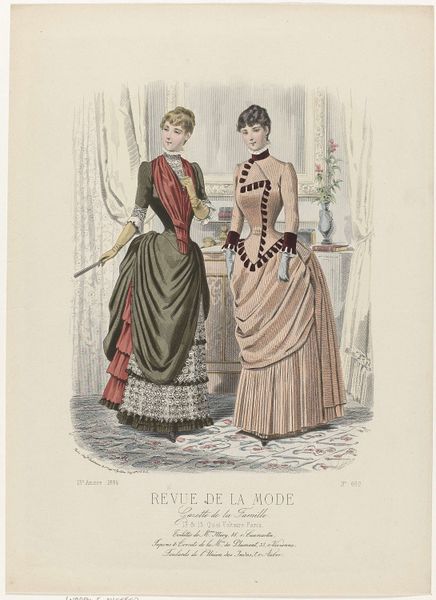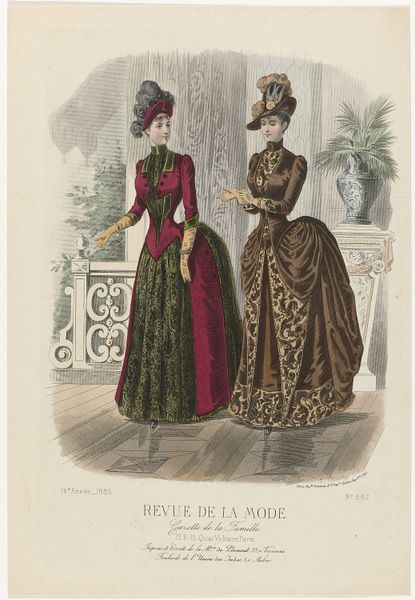
Dimensions: height 363 mm, width 262 mm
Copyright: Rijks Museum: Open Domain
Curator: This is “Het Toilet, 15 mei 1879, No. 11”, a fascinating etching by A. Chaillot, dating back to 1879. Editor: My initial impression is one of opulence tempered with restraint. The detailed rendering of the dresses is striking, almost exaggerated in its display of texture and form. Curator: Precisely. Note how Chaillot uses line and shading to create depth and dimension in the fabrics. The crisp delineation between the ruffles and the smoother sections of the garments draws the eye along specific trajectories. Semiotically, we read status through this differential patterning. Editor: I agree that the textures and composition signal status, but I think we need to contextualize this within the realities of late 19th-century female existence. "Het Toilet" isn't just about fashion; it's a coded glimpse into the performative nature of femininity within a patriarchal society, with both women presented for an imagined male gaze. Curator: Your point about performance is interesting. But can we not also appreciate the artwork for its sheer aesthetic qualities? The interplay of light and shadow across the ruffles, the subtle contrast of colors – the forest green against the brick red – this work invites purely visual contemplation. Editor: I believe a purely formal reading ignores the deeply embedded politics of the piece. This image functions almost as a sociological document of the era, one that reveals both the superficial glamour and the inherent constraints placed upon women of the time. Look at the carriage poised as if ready to convey either woman wherever they desire. Yet these women were likely extremely circumscribed in the very act of moving in the world freely, regardless of their wealth. Curator: Indeed. I suppose its appeal lies in that very dichotomy. The formal execution is impressive, and it sparks very valuable considerations about culture and societal influence. Editor: It serves as a poignant reminder of the complexities inherent in the visual representation of gender and class throughout history. The romanticization only sharpens our critical gaze.
Comments
No comments
Be the first to comment and join the conversation on the ultimate creative platform.
